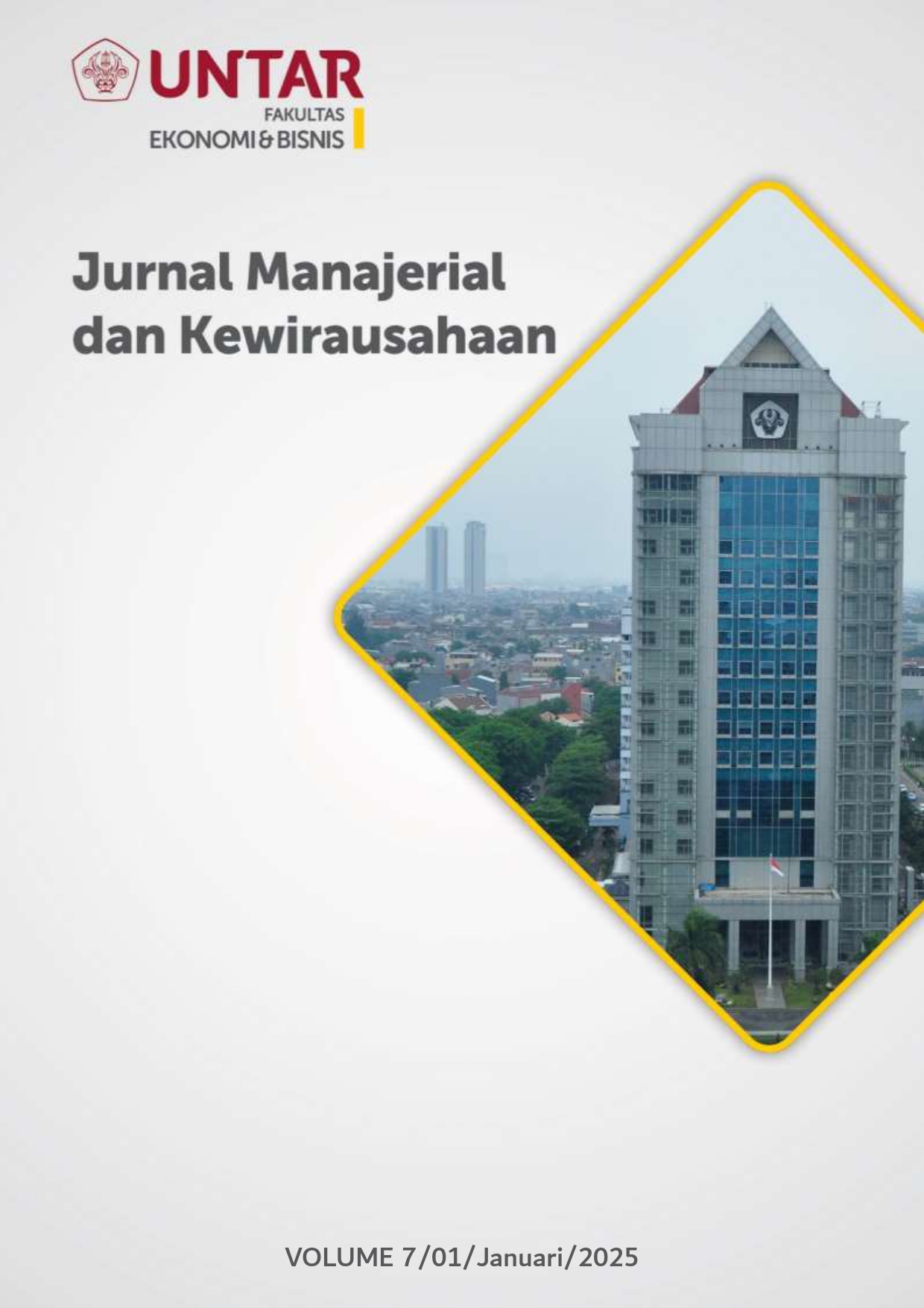Pengaruh Gaya Kepemimpinan, Motivasi Kerja, dan Budaya Organisasi terhadap Kinerja Karyawan Melalui Kepuasan Kerja
Main Article Content
Abstract
In the current era of globalization, Indonesia has quality human resources and demands high performance from company employees. There are several factors that can influence employee performance, namely leadership style, work motivation, organizational culture, and job satisfaction. This research aims to determine the influence of leadership style, work motivation and organizational culture on employee performance with job satisfaction as a mediating variable. The population used in this research were employees at PT XYZ. The method used is a quantitative method by collecting data from questionnaires distributed via Google Form and using purposive sampling techniques in selecting samples. The total population as a sample is 168 employees. The results of the analysis obtained are that leadership style has no significant effect on employee performance and job satisfaction, work motivation and organizational culture have no significant effect on employee performance, work motivation and organizational culture have a significant effect on job satisfaction, and job satisfaction has a significant effect on employee performance. Apart from that, job satisfaction is not able to mediate the influence of leadership style on employee performance, and job satisfaction is able to mediate the influence of work motivation and organizational culture on employee performance.
Article Details

This work is licensed under a Creative Commons Attribution-NonCommercial-ShareAlike 4.0 International License.
This work is licensed under a Jurnal Muara Ilmu Ekonomi dan Bisnis Creative Commons Attribution-ShareAlike 4.0 International License.,/p>
References
Bernardin, H. J. & Russell, J. E. A. (1995). Human Resources Management. New York: McGraw-Hill.
Dessler, G. (2005). Human Resource Management, 15e. Bengaluru: Pearson Education India.
Hair, J. F., Black. W. C., Babin, B. J., Anderson, R. E. (2014). Multivariate Data Analysis, New International Edition. New Jersey: Pearson.
Hair et al. (2017). A Primer on Partial Least Squares Structural Equa- tion Modeling (PLS-SEM). SAGE Publications, Los Angeles.
Hair et al. (2019). Multivarate Data Analysis. 8th Edition, United Kingdom: Cengage Learning EMEA.
Maslow, A. H. (2017). Motivation and Personality (Achmad Fawaid dan Maufur: Penerjemah). Yogyakarta: Cantrik Pustaka.
Munawaroh, S. R., Santanapurba, R. A., & Wahyuni, I. M. (2013). Faktor-faktor penting yang mempengaruhi kinerja karyawan. Journal of Human Resource Management, 2(1), 61-74.
Musyaffi et al. 2022. Konsep Dasar Structural Eguation Model-Partial Least Square. Tangerang Selatan: Pascal Books.
Pink, D. H. (2009). Drive: The Surprising Truth About What Motivates Us. Riverhead Books.
Razak, A., Sarpan, S., & Ramlan, R. (2018). Effect of leadership style, motivation and work discipline on employee performance in PT. ABC Makassar. International Review of Management and Marketing, 8(6), 67.
Robbins, S. P. & Judge, T.A. (2013), Organizational Behavior, 15th ed., Pearson Education, Boston, MA.
Robbins, S. P. & Judge, T. A. (2014). Organizational Behavior. Salemba Empat. Jakarta.
Robbins, S. P. & Judge, T. A. (2017). Organizational Behaviour, Edisi 13, Jilid 1, Salemba Empat. Jakarta.
Shmailan, A.S.B. (2016), The relationship between job satisfaction, job performance and employee engagement: An explorative study. Issues in Business Management and Economics, 4(1), 1-8.
Sihombing, S., Astuti, E. S., Al Musadieq, M., Hamied, D., & Rahardjo, K. (2018). The effect of servant leadership on rewards, organizational culture and its implication for employee’s performance. International Journal of Law and Management, 60(2), 505-516.
Tang, K.N. (2019), Leadership and Change Management, Springer Imprint, Singapore.
Tran, Q. H. (2021). Organisational culture, leadership behaviour and job satisfaction in the Vietnam context. International Journal of Organizational Analysis, 29(1), 136-154.
Yanuar, Y. (2017). Compensation, Motivation and Performance of Employees: Evidence from Indonesia. Journal of Economic & Management Perspectives, 11(4), 486-492.



